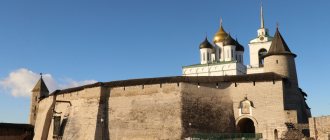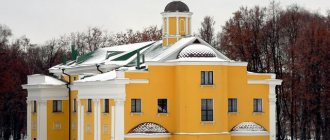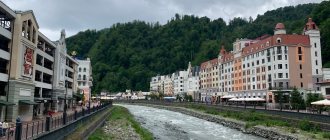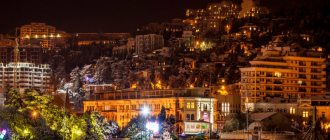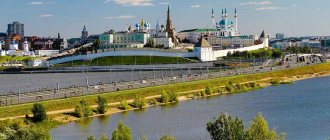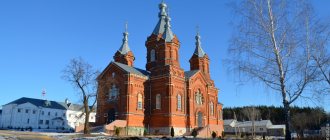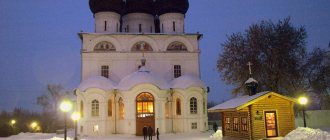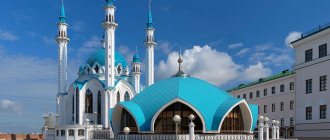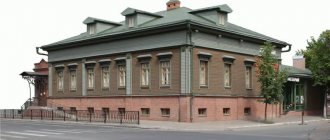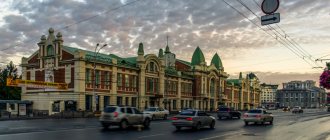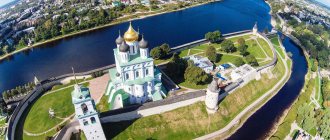Pskov is an ancient city with a rich history, a visit to which leaves special, indelible impressions. Its cultural and spiritual heritage, as well as architectural monuments and ancient buildings, together with enchanting nature, create a wonderful ensemble. The land of forests, rivers, colorful villages and temples is filled with the atmosphere of the Old Russian Middle Ages. According to the chronicle, the first mention of the city dates back to 903.
Located on the northwestern outskirts of the Russian land, the glorious city had to be raided more than once by Poles, Lithuanians, Swedes and Germans. Despite all the wars and occupations, he courageously fought to preserve his identity. Having decided what to see in Pskov in one day on their own, guests of the city will come into contact with the true knowledge of the soul of the Russian people and the centuries-old history of the construction of Russian statehood.
Pskov Kremlin
On a high hill between the Velikaya and Pskov rivers, the historical landmark and main symbol of the city, the Kremlin, majestically rises. An excellent example of defensive architecture is an ancient single architectural ensemble, the construction of which began in the 9th century.
Most of the fortress's buildings have retained their original, harsh and monumental appearance. Over its thousand-year history, the large-scale fortification structure was attacked by enemy troops more than 25 times.
Impregnable white stone powerful walls, hipped high towers, an amazingly beautiful cathedral with a bell tower, various luxurious chambers and a well-groomed, spacious internal square of the Kremlin make a grandiose impression. The architectural monument of culture is picturesquely reflected in the water surface of the river.
- Sights of Pskov
- What to see in Pskov in 2 days – 25 most interesting places
- 11 best museums in Pskov
- 17 best things to do in Pskov for children
Looking at Pskov from observation platforms
The excursion was interesting and informative, I liked it. You can see the whole city in half a day (I walk quickly). But it’s better to spend a whole day on it if you walk slowly and look at everything thoroughly. On your city tour (you can do it without a guide), I highly recommend you go to the observation points.
You can take great photos for your avatars from the observation decks
Or just admire the views from the guide in real time
There are a lot of ancient churches in the city, many of them have been restored.
For those who love ancient Russian architecture, this is the place for you.
Trinity Cathedral
The pearl of the Pskov Kremlin is the Holy Trinity Cathedral. Previously, on the site of the current temple, a wooden church was founded at the behest of Princess Olga in the 10th century. It is noteworthy that by that time Christianity did not yet have the status of an official religion in Rus'. The snow-white modern cathedral, which now delights with its beauty, was built in 1699. The masterpiece of ancient Russian architecture dominates the walls of the fort and is perfectly visible from anywhere in the city. The shrine, quadrangular in plan, rises 78 meters into the air.
The temple is crowned with five domes - the central tent sparkles with gilding, the other four bulbs are painted gray. The facade of the church is decorated with protruding vertical ribs, narrow window openings are decorated with platbands and elements made of relief stucco. The rich interior decoration of the Trinity Cathedral evokes a feeling of awe among parishioners.
The halls are divided among themselves by high square columns. The seven-tiered iconostasis with exquisite wooden openwork ornaments is striking. Its height is 48 meters. The vaults are unusually painted to resemble the starry sky. The temple houses miraculous ancient images and relics of saints.
Parks, squares and Pushkin with a nanny
Next, I suggest you take a walk in the park: there is a monument to Pushkin and his nanny.
Monument to Pushkin and his nanny
What is the Pusheen monument doing here, you ask?
Woof informs: After four years of exile in the south, in Chisinau and Odessa, Pushkin was sent to a new exile - “to a distant northern district.” While living in Mikhailovskoye, the poet visited the provincial Pskov. The richest life observations after visiting the Pskov land were widely reflected in the novel “Eugene Onegin”.
Unfortunately, I did not go on an excursion to the village of “Pushkin Mountains”, or even to the village itself, where the famous poet lived and worked. Although they say this is also interesting. But I wandered around the park.
And I came across some very interesting sculptures
There you can also see the old fortress wall:
More precisely, what is left of it...
If you have some time left, I advise you to go to the river:
There you can see the massive Posada towers...
…and just admire the beauty of the river and the monastery opposite
And, to be honest, there is nothing else to see in the city. All the chambers and houses of Marina Mnishek, which we marked on the map, were ruins. I hope that they will begin to be restored and make the city attractive to tourists.
Dovmontov city
At the foot of the hill in front of the entrance to the Kremlin is the city of Dovmont. Here, from the end of the 13th century, in a small area framed by a wall, there was a unique complex of churches and civil buildings. Thanks to the work of stonemasons and architects, numerous temples were erected, standing close to each other and under the protection of the Kremlin.
This was due to the fact that the city was often besieged by enemy troops. To build temples outside the fort meant exposing them to ruin and destruction. The cult place is named in honor of the Lithuanian prince Dovmontov, who left his homeland, underwent the holy rite of baptism and conscientiously began to rule the Russian city of Pskov. Later, during the Northern War, Emperor Peter I ordered the installation of a powerful battery, as a result of which part of the territory of Dovmont’s city was covered with earthen bastions.
Many churches were buried underground, and the remaining religious buildings began to serve as military warehouses. Today, Dovmontov city consists of the remains of stone foundations of various shapes and sizes, as well as surviving fragments of several churches.
Izborsk fortress
Today the Izborsk Fortress on Zheravya Mountain has been restored. The entrance fee is purely symbolic - 50 rubles. It’s worth going there in order to climb the Lukovka tower and see Dal - that’s right, with a capital D. If you stand on the tower and take a photo against the backdrop of the opening landscape, then in the photograph the background will look like it was painted, it is so picturesque.
You can walk all day in Izborsk. Or you can walk for a week. Being a landscape reserve, this small village attracts many photo tourists. A “Health Path” is laid across the territory of the reserve, several kilometers long. You can walk through the expanses of the Izborsk-Mal Valley on foot, or on bicycles, which are available for local rental, as well as on horseback.
If you can’t complete the “Path of Health” in one day, then you should stop at the Slovenian Springs, drink plenty of ice-cold, clean water and go to Pechory.
Rattling Tower
On the steep bank of the river, covered with trees and grass, the dilapidated Rattled Tower retains its former formidable glory. The six-tiered round structure made of limestone was part of the city's defensive system, formed in 1525. The height of the tower is 20 meters, the diameter of the base is 15 meters. Historians believe that the structure was erected with the participation of an Italian architect. This is evidenced by tower elements characteristic of the Western Middle Ages - a domed vault, loopholes and a system of underground passages.
According to one of the many versions, the fort received its current name because of the nearby hill where blacksmiths worked. The thundering blows of the masters' hammers literally shook the earth. Several mystical legends are associated with the tower. According to folk legend, a prince’s daughter is moaning underground in her sleep, and can be saved from witchcraft by a young man. He must read prayers for 12 nights, after which the girl will wake up.
Interesting places
Observation deck with Olginskaya Chapel
Not only does it offer the best view of the Kremlin and Trinity Cathedral, but this place is also associated with the legend of the founding of Pskov. According to her, it was here that Princess Olga stood when she saw three connecting beams on the opposite bank. She took this as a sign that this was a good place for the future of the city. On the opposite bank there is the famous inscription “Russia begins here” - one of the symbols of the city. It refers both to the ancient history of Pskov and to the fact that it is located in the very west of the country.
Zapskovye
Once upon a time, the Zapskovye region, adjacent to the center, was inhabited by Germans and other foreigners. Unfortunately, not a single building has survived from those times, and all foreigners were resettled with the annexation of Zapskovye to Pskov. This is the most cozy area with an inexplicable old Russian atmosphere. Ancient churches can be found every now and then on the quiet streets, and residential buildings consist mainly of wooden houses and low-rise residential areas.
It is also worth looking at the Meyer Rope Factory (22 Leona Pozemsky St.), a pre-revolutionary enterprise in the Art Nouveau style. You can get to Zapskovye by walking along the Golden Embankment and turning right.
Rattling Tower
A 14th-century tower on Gremyachaya Mountain, rising above the Pskovaya River. The impressive tower in a quiet place in Zapskovye has always been shrouded in many legends. For example, that the enchanted prince’s daughter is still sleeping inside, and can only be awakened by someone who reads the psalms at her sarcophagus. However, according to legend, as soon as the young men begin to read, evil spirits appear and throw them out of the tower.
Rusinov Chambers
Another example of residential stone buildings from the 17th century. The complex of buildings, including residential buildings, utility and storage facilities, belonged to the Rusinov family, one of the richest local families of that time. Once Peter I, who knew his family, even stayed in the chambers here. Unfortunately, this unique civil building had not been used for several decades and was in a dilapidated state. Now the building is in great ruins, but complete restoration is planned in the coming years.
The Rusinov courtyard is located on one of the busiest streets - Karl Marx Street. A large number of cafes and restaurants are concentrated on it; the city market is located near the embankment, as well as the pedestrian Pushkin Street.
Spaso-Mirozhsky Monastery
In a calm and fertile place at the confluence of the two rivers Velikaya and Mirozha, the ancient Spaso-Mirozhsky Monastery rises. The monastery, erected in the 12th century, was a true cultural center. In a small area surrounded by greenery, there was a library, an icon-painting workshop, and the chronicle was kept and the famous work “The Tale of Igor’s Campaign” was copied for posterity. The complex of buildings and structures of the monastery is a historical architectural monument.
The Spaso-Preobrazhensky Cathedral deserves attention. The white stone church, cruciform in plan, amazes with its preserved original appearance, which has not changed over all the centuries of its existence. The temple is crowned with an onion dome mounted on a massive drum with narrow high windows. The walls and ceilings of the cathedral are painted with unique frescoes from the pre-Mongol period.
They were made by Greek craftsmen. For a long time, colorful panels were hidden under thick layers of plaster. After a major renovation, this man-made miracle was discovered, listed as a UNESCO World Heritage Site.
Sights of Pskov
Thanks to its thousand-year history, the city of Pskov is rich in attractions of various ages and types.
Pskov Kremlin
The historical and architectural center of the city is the Pskov Kremlin, otherwise called Pskov Krom. The fortress was built on a cape, near which the confluence of the Velikaya and Pskov rivers occurs. The area of Krom is three hectares. Its history begins in the 10th century, when local settlers built the first wooden fortress. Then stone fortifications and the first temple were built. In the XIV-XVI centuries, the Kremlin played the role of the official center of the city - local residents gathered here, and important issues were resolved.
The Pskov Kremlin occupies 3 hectares of territory, which is surrounded by fortress stone walls
Address: street Embankment of the Velikaya River. Opening hours: 6.00–22.00. Free admission. Order an excursion - from 150 rubles. per person. How to get there: buses No. 1, 5, 7, 7A, 11, 18, 22, 25, 30, minibuses No. 51 and 51A. Go to the Lenin Square stop.
Trinity Cathedral
Trinity Church is the same temple that was erected on the territory of the Pskov Kremlin in the 10th century by order of Princess Olga. During the history of its existence, the building was rebuilt four times, but still remains one of the most important landmarks of Pskov. The current building was erected in 1699 and is 72 meters high. The traditions of the Moscow style of the 17th century are noticeable in the architecture of the temple. The church operated continuously until 1935, when it was closed by order of the Soviet authorities. At that time, an anti-religious museum functioned here, but in 1941, when the city was occupied by the Germans, the temple again opened its doors to believers. Today the Trinity Cathedral still functions successfully.
Trinity Cathedral - the oldest temple in the name of the Holy Trinity in Rus'
Address: Naberezhnaya Reki Velikaya street, territory of the Pskov Kremlin. Opening hours: 6.00–18.00. Free admission. How to get there: buses No. 1, 5, 7, 7A, 11, 18, 22, 25, 30, minibuses No. 51 and 51A. Go to the Lenin Square stop.
Dovmontov city
Dovmontov town is a unique archaeological site, occupying an area of one and a half hectares. It belongs to the Pskov Krom, but has its own history. The landmark got its name from Prince Dovmont, who ruled Pskov in the second half of the 13th century.
During his reign, Dovmont decided to increase the territory of his possessions, so he began to add new buildings to the walls of the Kremlin. Many houses appeared here, folding into streets, as well as 18 churches. Such a number of religious buildings made this place unique for Russia at that time. However, at the end of the 17th century, Peter I issued a decree on the dismantling of all churches and temples, and in their place he ordered the construction of new fortifications, which were required for the defense of the city in the Northern War. After this event, the Dovmont city was forgotten for three long centuries; only in 1954 were its remains discovered.
Dovmontov city is a unique architectural complex in the center of Pskov, which has no analogues in our country
Address: Naberezhnaya Reki Velikaya street, territory of the Pskov Kremlin. Opening hours: 6.00–22.00. The entrance is free. How to get there: buses No. 1, 5, 7, 7A, 11, 18, 22, 25, 30, minibuses No. 51 and 51A. Go to the Lenin Square stop.
Rattling Tower
The Gremyachaya Tower is part of the Okolny City, which included sixteen towers, but not all have survived. The height of the building reaches twenty meters, which are divided into six tiers. In ancient times, each of them had defensive cannons. The first floor is equipped with an underground passage leading to the coast of the Pskov River.
The popularity of the Gremyachaya Tower is determined by the legends that circulate around it:
- One of them says that once upon a time the Teutonic Knights locked the Pskov prince inside the tower and captured the city. The Pskovites rose to defend their homeland and entered into battle with the enemy, during which the spirit of the prince, who had already died in the tower, frightened the attackers and helped defend the city.
- Another legend tells of a prince's daughter who sleeps soundly inside the tower. She was bewitched by her own mother, and only a man who spends twelve days and nights near the sleeping woman’s bed can remove the spell.
The Gremyachaya Tower is the most mystical place in Pskov, with which many legends are associated.
Currently, the tower is slowly being destroyed, and its complete reconstruction has not yet taken place.
Address: Gremyachaya street, building 8. Opening hours: 24 hours a day. Free admission. How to get there: bus No. 3, minibus No. 51 and 51A. Get off at the Ippodromnaya stop.
Mirozhsky Monastery
The monastery is one of the most ancient in the Pskov region. The date of its foundation is considered to be the 12th century, it was then that the main cathedral of the monastery was erected - the Transfiguration Cathedral, which practically did not undergo reconstruction. The temple has features of classical Byzantine architecture, which is rare for Orthodox churches. Also, the territory of the monastery includes a bell tower, a refectory church, Stephen's Church, the Brotherhood building and a stone house where the abbots of the monastery live. All the buildings of the monastery are decorated with paintings and ancient frescoes, and more than 80 percent of the ancient patterns were preserved on the walls inside the Transfiguration Cathedral. Today the monastery is one of the largest and richest.
Mirozhsky Monastery is famous for its unique, preserved pre-Mongol frescoes
The monastery operated successfully until the beginning of the twentieth century, but then it was closed by the Soviet authorities, and an excursion station was opened in its buildings. Monks appeared here again only in 1994, and in 2011 an icon painting school for children was opened at the monastery. Currently, it also houses a museum dedicated to the history of the monastery.
Address: Mirozhskaya embankment, building 2. Opening hours: 6.00–22.00. Museum opening hours: 11.00–18.00, closed on Mondays. Ticket prices: 200 rubles, students - 150 rubles, schoolchildren - 100 rubles. How to get there: bus No. 2. Go to the Mirozhsky Monastery stop.
Photo gallery: frescoes and temples of the Mirozhsky Monastery
The hands of Byzantine architects belong to the wonderful temple frescoes that covered all surfaces from floor to ceiling, which make a stunning impression on those who see them for the first time
The space of the dome is occupied by the composition “Ascension”
The fresco “Lamentation of Christ” is located in the northern sector of the vault and is especially popular
Despite the antiquity of the frescoes, they were discovered about a century and a half ago; until that time, unique decorations were hidden under a thick layer of whitewash and paints
The drawings depict the warriors Sergius and Bacchus, the holy healers Panteleimon, John and Cyrus, the martyrs Romulus and Eudokius, and here you can also see images of the saints Apexim, Aifal, Joseph and the Monk Euphrosynus and Nikon
The fresco “The Savior on the Throne” is located on the central apse
The Transfiguration Cathedral functions as a museum, and services are not held here; the building and courtyard of the church are filled with parishioners only once a year - on the Transfiguration of the Lord
Stephen's Church was built in 1604; its main attraction is the unique iconostasis, filled with frescoes.
The authorship of the drawings belongs to Archimandrite Zinon, he also painted the iconostases of the Trinity-Sergius Lavra, the Danilov Monastery, and he also painted many other Russian and foreign churches
Old Ascension Convent
The exact date of foundation of the monastery is unknown, but one thing is clear - it was built before the 15th century. The main building is the Ascension Cathedral, erected on the site of an old wooden church in the 30s of the 16th century. During its history, the monastery changed its direction several times, becoming either male or female, and was often in dire straits. The 19th century marked the heyday of the monastery: the Church of the Nativity of the Virgin Mary, in the Empire style, was built here, then the Church of the Blessed Virgin Mary of Tikhvin, as well as a fence, cells and a chapel. In the post-revolutionary period, the monastery was closed, and the buildings were occupied by the NKVD, OGPU and police services. Today, only one Church of the Ascension is functioning for its intended purpose, while other buildings house the Pskov planetarium and observatory.
The Church of the Ascension of the Lord, better known as the Old Ascension, is one of the most significant and revered churches in Pskov
Address: Sovetskaya street, houses 62A, 62B, 62B, 64A. How to get there: bus No. 2, 11, minibus No. 2T, 51, 51A. Get off at the stop "Victory Square" or "Children's Park".
Snetogorsk Monastery
The first mention of the Snetogorsk monastery in chronicles dates back to the end of the 13th century, when it was burned by Livonian knights. This means that the foundation of the laurel occurred even earlier. In subsequent years, the monastery was rebuilt again: in the 14th century the Cathedral of the Nativity of the Virgin Mary appeared, in the 16th century - the Church of St. Nicholas the Wonderworker, the Ascension Church and the bell tower. Since the 15th century, the monastery occupied the place of the cultural and spiritual center of the Pskov region, but then was partially destroyed during the Livonian and Northern Wars. During the Second World War, the Wehrmacht headquarters was located on the territory of the monastery.
Snetogorsky Monastery stands on the elevated bank of the Velikaya River
Today the monastery is still in operation. The main thing worth seeing is the Cathedral of the Nativity of the Virgin Mary. Its interior has an unusual style - there are frescoes on a biblical theme, interpreted in a free style. The saints are depicted as ordinary people who do not carry any religious symbolism. Today, the images are practically invisible, and work on their restoration has been going on for about a hundred years.
The Cathedral of the Nativity of the Virgin Mary of the Snetogorsk Monastery is a world cultural monument
Address: Snyatnaya Gora street, building 1. Opening hours: 8.00–21.00. Free admission. How to get there: bus No. 1. Get off at the final stop “Snatna Gora”.
Photo gallery: frescoes of the Cathedral of the Nativity of the Virgin Mary
The first frescoes appeared on the walls of the temple in 1313
Unlike other monasteries and temples of that time, which were painted by Greek masters, the main temple of the Snetogorsk monastery was painted by Pskov masters
During the war with the Polish prince Stefan Batory, the frescoes were damaged and completely whitewashed, which may have saved them from complete disappearance
The frescoes were discovered in 1910, and their restoration began at the same time.
Today, restoration work is still ongoing, but you can already admire these ancient paintings
The western part of the temple is decorated with frescoes depicting the Last Judgment
Olginskaya Chapel
According to legend, the chapel was installed exactly on the spot where Princess Olga stood when she saw the heavenly rays, thanks to which the city of Pskov appeared. At first a memorial cross was simply erected here, and later a chapel was built. However, the old building was demolished in 1960, and a new one was erected only at the beginning of the 21st century.
Grand Duchess Olga, Equal to the Apostles, the first Christian in Rus', was especially revered in her homeland, in Pskov
Address: Olginskaya embankment, building 4A. How to get there: bus No. 3, 4, 5, 7, 14. Get off at the “Maxim Gorky Street” stop.
St. John the Baptist Cathedral
Presumably the cathedral was built in the 12th century and belonged to the Ivanovo convent, which was destroyed under Soviet rule. However, the cathedral itself avoided such a fate. In 1990, it was restored and again handed over to believers. The appearance of the temple is not similar to all other religious buildings in Pskov: there are no external decorations, but the interiors of the building are richly decorated. Previously, the walls were decorated with frescoes and paintings, some of which are kept in the Tretyakov Gallery, but today's pattern is the result of the work of modern masters.
The cathedral develops the features of Novgorod religious buildings of the 11th - 12th centuries and has no analogues in Pskov architecture
Address: Maxim Gorky Street, building 1. How to get there: bus No. 2, 3, 4, 7, 14, 15, 17, 22, 25, 30. Get off at the Petrovskaya Street stop.
Church of Constantine and Helena
The temple was built in the 17th century and has an architecture typical of Pskov buildings of that time. This is a unique church, the appearance of which has practically never changed throughout its history. However, the interior decoration could not be preserved, because under Soviet rule the building housed a speleologists’ club and artist’s workshops. During the era of the decline of Soviet power, the church became operational again, and its interior was restored by the parishioners. What makes the church unique is the fact that exorcism sessions take place within its walls.
The Church of Saints Constantine and Helena was recently abandoned and destroyed, presenting a sad sight, now the temple has been transformed, it has been restored, the chapel of Blessed Xenia has appeared
Address: Krasnogorskaya street, building 26. How to get there: bus No. 3 or 5. Get off at the “Ippodromnaya” stop.
Museum of Local Lore
The museum began its work in 1876. Its exposition is so huge that it will take several days to study it. According to some estimates, the museum houses more than 500,000 exhibits.
The museum is a complex of buildings, which includes:
- Transfiguration Cathedral;
- Mirozhsky Monastery;
- Order chambers;
- Pogankin chambers.
Pogankin chambers
The chambers were built at the end of the 17th century by order of the merchant Pogankin. Their walls were supposed to house a residential building, a warehouse and a factory. The style of construction was typical of all fortress houses of that time: high walls and small windows. Today, the building is given over to the local history museum, is its main building and houses an exhibition under its roof, where archaeological finds, old handwritten monuments, ancient icons and silver items are presented.
The Pogankin Chambers were erected in 1670
Address: Nekrasova street, building 7. Opening hours: 11.00–18.00, closed on Monday, the last Tuesday of each month. Entrance ticket prices: 200 rubles, students - 100 rubles, schoolchildren - 60 rubles. How to get there: bus No. 1, 2, 2A, 4, 5,6, 16, 19, minibus No. 2T, 4A. Get off at the stop "Victory Square" or "Children's Park".
Order chambers
The chambers are an administrative building dating back to the 17th century. Previously, officials, ambassadors, bankers and city administration met here. Initially, the building was made of wood, but due to constant fires, the walls of the building were built of stone, and their thickness reached two meters. Today, the building houses a branch of the Local History Museum, which stores historical artifacts, and the interiors of those times have been recreated in the offices where the clerk and governor used to sit.
Prikaznye chambers - a medieval stone building built in 1693
Address: territory of the Pskov Kremlin, building 4. Opening hours: 11.00–18.00, weekends - Monday and Tuesday. Entrance ticket prices: 80 rubles, students - 50 rubles, schoolchildren and pensioners - 40 rubles. How to get there: buses No. 1, 5, 7, 7A, 11, 18, 22, 25, 30, minibuses No. 51 and 51A. Go to the Lenin Square stop.
Photo gallery: Museum in the Executive Chambers
The currently existing roof corresponds to the appearance of the 17th century, and the ancient hipped roof is planned to be restored during the next restoration of the chambers
Here the collection of taxes and duties took place, the expense books of the Order Chamber were kept and units of measurement were stored
The clerk supervised all the clerks, his desk stood in the governor’s office
The interpreters who worked at the embassy table had to know several foreign languages
Museum "Two Captains"
The museum was opened at the children's and youth library in 2002. The writer Veniamin Aleksandrovich Kaverin, the author of the novel “Two Captains,” is a native of the city of Pskov. The museum exposition tells not only about the novel “Two Captains” and the history of its writing, but also about the biography of the writer, as well as the life of his family. In addition, the exhibition tells the story of those people who became the prototypes of the heroes of the famous work.
In the eighties, Veniamin Kaverin actively collaborated with the library; he donated many of his manuscripts and books to the institution, and the writer himself chose a sketch to create a monument
Next to the library building there is a thematic sculpture that appeared here in 2005.
Address: Oktyabrsky Avenue, building 7A. The museum is closed for reconstruction. How to get there: bus No. 1, 8, 11, 14, 17, get off at the “House of Soviets” stop.
Mason's House
The building was erected at the beginning of the twentieth century. The architectural style of the building is modern. Despite its name, the house has nothing to do with secret societies. Everything is much simpler: at the end of the 19th century, the Scotsman Ludwig Mason lived here. Local residents mispronounced his last name, which is where the nickname “Mason” came from. He lived here before the revolution, and then disappeared without a trace. The building was given over to communal apartments. In 2002, the building was transferred to the Pskov Historical, Architectural and Art Museum-Reserve, which uses it as a storage facility for valuable things:
- silver and gold coins;
- antique jewelry;
- collectible weapons;
- treasures found during archaeological excavations.
According to research, the Mason's house stands on the site of the cathedral church of the Chrysostom Medvedev Monastery, which served as the tomb of the Pogankin family of merchants.
The repository is open to the public, so anyone can see the valuable fund. In addition, the building houses the Heraldic Hall, which displays the coats of arms of various Pskov counties, household items of local residents of the 19th-20th centuries, paintings on canvas, weapons of the Russian army, medals and orders.
Address: Komsomolsky lane, building 6. To visit the storage facility, you must make an appointment with the guide by phone in advance. Ticket prices: from 150 rub. How to get there: bus No. 1, 3, 4, 5, 11, 14, 14A, 15, 17, 19 minibus No. 4A, 14T, 51. Get off at the “Summer Garden” stop.
Interesting streets and squares of the city
The most interesting locations for tourists will be the following Pskov locations:
- "Golden Embankment". This is what local residents call the Primostye quarter, located on Sovetskaya Embankment. All the buildings here were erected not so long ago, but fully comply with the traditions of the ancient houses of the city. How to get there: bus No. 1, 7, 7A, 25, minibus No. 51, 51A. Get off at the stop “Ulitsa Alexandra Nevskogo”.
The Golden Embankment is located in the historical center of Pskov, just a stone's throw from the Kremlin, just cross a small bridge - October prospect. The avenue is one of the central streets of the city. Almost every building here is an architectural monument. Most of the buildings were built in the late 19th and early 20th centuries. How to get there: bus No. 1, 2, 2A, 5 14, 14A, minibus No. 2T, 14T, 51, 51A. Get off at the stop “Ulitsa Metallistov”, “Torgovy”.
- Square of victory. The square is dedicated to the occupation of Pskov during the Great Patriotic War. There is a monument to the Unknown Soldier and the Eternal Flame burns here. Nearby there are bas-reliefs that tell the military history of the city: all the wars in which Pskov itself or its natives participated are shown. How to get there: bus No. 2, 2A, 5, 6, 11, 16, 19, minibus No. 2T. Get off at the “Ploshchad Pobedy” stop.
Monuments
Popular monuments of Pskov are:
- Monument to Princess Olga. The princess is a cult personality for Pskov. Local residents love and respect their ancient countrywoman very much and dedicate various buildings to her. So, in 2008, a monument to the princess appeared here, the installation of which coincided with the 1100th birthday of the city. Address: Children's Park. How to get there: bus No. 3, 4, 5, 11, 14. Get off at the “Children's Park” stop.
Princess Olga is the most revered saint in Pskov, because it was on her order that the Holy Trinity Monastery was built, which gave rise to the glorious history of the Pskov land - Monument to Pushkin and Arina Rodionovna. The monument was erected in 1983 and is called “Pushkin and the Peasant Woman”. The uniqueness of the sculpture is that it is the only one of its kind, depicting the great poet together with his beloved nanny. Pushkin's fate is inextricably linked with Pskov: he often came here and was inspired by the local nature. It was in Pskov that the chapters of “Eugene Onegin” and “Boris Godunov” were written, and also some of the writer’s fairy tales were born. Address: Summer Garden. How to get there: bus No. 1, 3, 8, 11, 14, 14A, minibus No. 14T, 51A, 51. Get off at the “Summer Garden” stop.
The monument has the official name “Pushkin and the Peasant Woman”, but it is better known as “Pushkin and the Nanny”
Snetogorsk Monastery
The oldest women's monastery of the Blessed Virgin Mary Snetogorsk is the central monastery of the Pskov lands, located a few kilometers from the city center. According to the chronicle, the first mention of this holy place is found in manuscripts for 1299. The monastery was repeatedly plundered and destroyed by foreign enemy invaders.
The attacks were explained by the desire to seize a strategic position on the high bank of the river. Despite the trials that befell the buildings, there were still people who restored the monastery from the ruins. Therefore, the architectural ensemble of the monastery took very diverse forms.
The Snetogorsk monastery consists of cathedrals, church schools, icon-painting workshops, as well as residential and utility buildings. The most significant object of the monastery is the white stone Church of the Nativity of the Virgin Mary, built in 1312. The cubic church is decorated with a dome standing on a drum, which is surrounded by openwork ornaments. Inside the temple there is a unique collection of wall paintings. Beautiful frescoes depict biblical scenes. The painting surprises with images of saints, which are presented humanely without symbolism.
Church of the Assumption
For example, while wandering near Krom, you cannot help but notice on the opposite bank of the Velikaya River a church with an unusual bell tower. This is the Church of the Assumption from Paromegna. It was built in 1444. All attacks on the city took place from the west, from the left bank of the river, and the fortress stood on the right bank. But trade continued and a ferry was built across the river. Located on the opposite side of the river from the fortress-protected side, the church served as a guard for the ferry crossing. The thickness of the church walls is four meters, the windows are in the form of loopholes (the church was rebuilt in peacetime). The free-standing belfry is thick and located on a high, strong pedestal, which made it possible not only to successfully fight off those below, but also to monitor the road leading to the crossing, and promptly give the city a signal about the approach of the enemy.
Each temple of ancient Pskov has its own history and its own character. Church of Vasily on Gorka, Church of Peter and Paul from Bui, Church of Pope Clement, Mirozhsky Monastery, Snyatogorsky Monastery. It’s not for nothing that Pskov is called the Mecca of pilgrimage trips.
For those who are not interested in religious monuments, it is worth visiting secular monuments. Among them, two are especially memorable.
Museum "Two Captains"
For fans of the famous adventure novel “Two Captains,” it will be fascinating to visit a museum dedicated to the literary work, as well as the life and work of the author Veniamin Kaverin. The Soviet writer was born and raised in Pskov. The writer's hometown became the prototype of Ensk, which was described in the book.
Museum exhibits are located in the building of the children's and youth library. The place is filled with the romance of the exciting chapters of the book. The institution's expositions allow visitors to immerse themselves in the atmosphere of the events described. Here you can see an airplane propeller blade, a model of a schooner, a ship's wheel, many historical photographs, a compass, globes and other objects.
V. Kaverin’s personal belongings are collected in a separate room. These are manuscripts, drafts, first editions of the novel and reviews. In front of the museum building there is a sculptural composition of two captains - Tatarinov and Grigoriev. The figures of the heroes of the work are captured in dynamics. One with a mighty beard seems to emerge from a block of ice, the other in a pilot’s helmet confidently heads towards the task at hand.
Museum "Honey Farm"
In the village of Dubrovka, among a dense forest, there is a real kingdom of bees - the “Honey Farm”. The farm and at the same time an open-air museum attracts all honey lovers with interesting exhibits that give an idea of the traditions, history and culture of beekeeping.
The museum consists of ancient wooden huts, which recreate the atmosphere of peasant life of the 19th century. Here you can see a variety of tools, household items, as well as collections of rare beehives, samovars, irons, craft tools, honey extractors and much more.
In total there are more than 10 thousand exhibits. Tasting rooms are equipped on the well-groomed territory of the farm, where tourists are given the opportunity to try delicious Pskov honey products. You will be pleasantly surprised by the abundance of drinks that combine different types of honey with berries, fruits, tea, bread and cheese. For particularly curious visitors to the farm, special courses on bee breeding are held.
What gifts and souvenirs to bring
Tourists try to bring something home after every trip to a city. Souvenirs and gifts are the best option. You can bring a lot of things from Pskov. There is a wide range of things that are beautiful, useful, and interesting. They will remind you of a specific city. For example, why not bring Pskov ceramics? It is made using black clay. They are fired using a unique technology using milk.
Clay and pottery dishes can be called an excellent gift. Parents will be happy if you give them a teapot and two cups. If we are talking about a gift for a friend, a good option is 2 beer mugs. If you need to give a gift for a housewarming or a wedding, buy a ceramic set. The interior of a cottage or country house can be perfectly complemented by a set of ceramic and tableware. Ceramics tend to remember the energy of the creator. So, your friends and family will remember you when using the dishes.
Pogankin chambers
The complex of the museum-reserve includes the original Pogankin Chambers. More than 300 years ago, the powerful and wealthy merchant Sergei Pogankin ordered the construction of a universal building for himself, which was to house residential apartments and warehouse annexes. As a result, the townspeople saw a classic Russian medieval single ensemble of buildings with powerful white walls, small windows, wooden hipped roofs and a decorated porch.
The Pogankin Chambers attract tourists with their numerous and varied museum exhibits. In the merchant premises, collections of antique silver items, church items, unique colorful Pskov icons, all kinds of authentic weapons, paintings from various art schools and masterpieces of folk decorative applied art are exhibited. A large museum exhibition is dedicated to the Great Patriotic War.
"Mikhailovskoe"
The Pushkin Museum-Reserve will be of interest to all lovers of Russian literature. And just relaxing in the lap of nature on a fine summer day is a pleasure. The reserve includes the family estate and estates that belonged to the poet's family and friends, several museums, and a scientific and cultural center .
“Mikhailovskoye” – Pushkin’s family estate
Order chambers
The only administrative building on the territory of the Kremlin, where the administrative apparatus of the voivodeship met, was called the Order Chambers. The 17th-century building is a two-story white rectangular building made of limestone slabs with thick walls, a hipped roof, a massive stone porch and a high staircase.
The chambers were divided into five departments, each of which performed its own tasks and decided the fate of the Pskov residents. The office desks of the embassy, finance, land, army and court were also located here. The premises have recreated the original working environment of the governor and officials of the Middle Ages.
Menshikov Chambers
In one of the central areas there is a stone architectural ensemble built in the second half of the 17th century. These are the chambers of the zemstvo elder Semyon Menshikov, who was one of the richest and most influential merchants of the Pskov lands.
The complex consists of separate three- and two-story stone buildings, the facades of which are decorated with a porch with columns, small window openings with ornamented frames and wide staircases. The merchant mansions are connected to each other by an underground passage. The lower floors of the buildings served as warehouses, and the upper large halls were intended for receiving guests and entertaining the owners.
Square of victory
Located on the western outskirts of the Russian land, it turned out to be one of the first cities occupied by the fascist invaders. In the surrounding lands, popular partisan detachments were created, which, due to their capabilities, heroically fought the enemy. Only in the summer of 1944 the city was liberated from the Germans. Victory Square in the central region reminds of the exploits of Soviet soldiers and the triumphant end of the Great Patriotic War.
In the well-groomed park area you can see the alley of heroes of Pskov, the “Eternal Flame”, memorial steles with bas-relief images, as well as the Tomb of the Unknown Soldier, above which rises a monumental composition of anti-aircraft guns directed upward.
Where to eat in Pskov? Woof advises
The average bill at Sergeevsky Canteens is 200 rubles for 1 mouse. And 300 for a gluttonous mouse.
Walking around Krom, observation platforms and the park exhausted me. In general, I worked up a decent appetite. So I went to a wonderful place called “Sergeevsky Canteens”. There I ate the first, second, compote and egg. I liked it very much, I was full of it.
If the simple atmosphere of Soviet canteens is not to your taste, just opposite are wings from Colonel Sanders. Fast food lovers - hello!
Monument "Battle on the Ice"
On Mount Sokolikha, among picturesque endless fields, a majestic sculptural composition rises, attracting the attention of tourists. This is the famous “Battle on the Ice” monument, which personifies an important historical period of the Pskov lands. The monument is dedicated to the squad of Prince Alexander Nevsky, who defeated the troops of the Livonian knights who captured a number of Russian cities in the middle of the 13th century.
The opening of the memorial took place in 1993. It is noteworthy that the statue was installed a hundred kilometers from the real site of the battle. The 30-meter-high monument is impressive in scale and amazing in its artistic design. The central composition of the sculpture is the equestrian figure of Alexander Nevsky with a shield and sword.
The prince was surrounded by his loyal companions. These are warriors dressed in chain mail and helmets, as well as an old man, an urban artisan and a kneeling peasant. Against the background of the blue sky and snow-white clouds, the spears and banner of the heroes of the fatherland rise high. The monument reflects the strength and power of the Russian state.
Let's move on
Having walked around the territory of the Pskov Kremlin to our heart's content, let's go beyond its borders and see what else interesting things this beautiful city has prepared for us, where every street is literally imbued with the spirit of history. Actually, the whole of Pskov is an open-air museum and almost everywhere there is something to see on your own or accompanied by a guide.
In winter and autumn you can hide from bad weather in numerous museums and galleries located inside medieval buildings. We assure you that the time spent studying household items, utensils and crafts of our ancestors will fly by. In spring and summer, guests will find numerous parks and squares surrounded by greenery.
Just a couple of steps from Krom is the central square named after. Lenin, and a little further away - Oktyabrskaya, from which Sovetskaya Street originates, with unique churches located on it, many of which are under UNESCO protection, such as the Church of St. Nicholas of Usokha, built on the site of a dry swamp. In ancient times, wealthy townspeople liked to settle here.
On Sovetskaya there is also the current convent of the Old Voznesensky Convent, built in 1420! During Soviet times, the territory of the monastery was given over to the needs of the state, but then the monastery was returned to its true purpose. However, it is curious that inside the Church of the Nativity of the Virgin Mary, which is part of the complex, there is still a planetarium to this day.
After walking a little further, the traveler will find himself in the masterfully restored Menshikov Chambers. They were built for the wealthy merchant Semyon Menshikov in the 17th century, and later three more buildings were added to them. The Menshikovs lived here until a terrible fire that happened in the next century and caused great damage to their living quarters. Nowadays, art exhibitions are held here, and in souvenir shops tourists can purchase ceramic products for themselves and as gifts, produced at a local enterprise.
Another favorite place for tourists to walk is Oktyabrsky Prospekt, part of which is occupied by the Children’s Park, which is part of the City Park of Culture and Recreation along with the Botanical and Summer Gardens. Adults will enjoy strolling along the well-maintained, illuminated paths, and children will certainly enjoy the various attractions. There is also a monument to Princess Olga, who is considered the patroness of Pskov and all its inhabitants. Her face is turned towards the Trinity Cathedral, and the pedestal is decorated with bas-reliefs of twelve saints.
It must be said that the Summer Garden, which can be called the “lungs” of the city, deserves special attention. Its paths and alleys are surrounded by the greenery of maples, lindens, poplars and other trees growing there. It is no coincidence that there is a monument to Alexander Pushkin in the park - the poet wrote at least 100 of his outstanding works on Pskov soil.
It is in the Pskov region, 115 km from the city itself, that the Mikhailovskoye Museum-Reserve, famous throughout Russia, is located. The great poet himself is buried here. The Hannibal-Pushkin necropolis is also located here. Pushkin spent two years of exile at the estate, which turned out to be very fruitful. During this period, the third to sixth parts of the novel “Eugene Onegin”, the poem “Gypsies”, the tragedy “Boris Godunov”, the story “Count Nulin” and many poems were written, including “I Remember a Wonderful Moment” and other famous works.
After the death of Pushkin, the estate passed to the heirs, and in 1899 it was bought by the state.
The name of the great poet is immortalized in the name of the Pskov Drama Theater. Funds for its construction were raised by concerned citizens in honor of the centenary of the birth of Alexander Sergeevich. By 1906, an unusually beautiful building in the Empire style appeared on the street of the same name, which in itself is an architectural monument. During the Great Patriotic War, the building was badly damaged, but was quickly restored.
There are also unusual places in Pskov. If you have visited all the iconic sights far and wide, we recommend that you look at something more extraordinary. For example, Red Partisans Street has its own miniature copy of the Eiffel Tower. On one of the fences of a residential complex under construction, street artists immortalized the image of Princess Olga in graffiti. On the embankment of the Velikaya River there is a model of a lighthouse. And on the facade of a private house, located at 6A Sverdlova Street, perched a 300-kilogram dragon, forged by the craftsmen of the local blacksmith’s yard.
Pskov and its surroundings are rich not only in architectural monuments, but also in their picturesque nature. The city is surrounded by forests, fields and rivers. Lovers of camping in tents and avid fishermen will surely enjoy this place. On hot days, townspeople and tourists will find well-maintained and natural beaches, and in winter it’s so much fun to ride along the snow-covered slopes with the breeze.
The tourism sector is actively developing, and every year more and more new comfortable hotels, cafes and restaurants open in Pskov.
wikipedia.org / Viktor Sagaydashin / CC BY-SA 3.0
Monument to the 6th company
In the village of Cherekha there is a memorable monument dedicated to the heroically killed soldiers of the sixth parachute company in the second Chechen campaign in 2000. A detachment of Pskov paratroopers took on an unequal battle at an altitude of 776 meters in the Argun Gorge with large enemy forces. The basis of the sculptural monument is a parachute. A metal dome with steel slings is installed on a pedestal designed to look like a mountain peak. In the center there are 84 long candles pointing upward. Their number corresponds to the number of bravely killed soldiers.
At the foot of the monument there are granite slabs on which the names of the paratroopers are engraved. In the inside of the parachute dome you can see copies of the autographs of all the fighters. The building is crowned with the star of the Hero of Russia.
"Golden Embankment"
Along the river bank there is a magnificent embankment, immodestly popularly called the Golden. The place attracts the attention of tourists with beautiful hotel complexes built in the architectural style of the 19th century. Colorful facades of buildings with decorative elements give the quarter a noble aristocratic ambiance. On the other bank, opposite the palace ensemble lined up in a row, the majestic buildings of the Pskov Kremlin rise.
The landscaped area of the “golden embankment” makes for an ideal, pleasant walk. On the street, paved with decorative tiles, there are lanterns and comfortable benches, as well as tall broad-leaved trees and flower beds.
Where to stay
The choice of hotels in Pskov is quite wide, and you can choose between quite comfortable, albeit faceless, hotel complexes of the Soviet era and colorful, but more expensive modern hotels in the historical part of the city. For example, staying on Romanovskaya Hill in the hotel complex “Dvor Podznoev”, you can, without leaving the hotel, view an exhibition dedicated to excavations on the site of 18th-century chambers. In Zapskovye you can stay in the Zolotaya Naberezhnaya hotel overlooking the Kremlin or in the Old Estate hotel, located in reconstructed buildings of the 16th-19th centuries with original designer interiors and a modern spa complex.
- All hotels in Pskov with descriptions, ratings, photos and reviews from tourists
- Apartments for daily rent in Pskov from local residents with a guarantee of occupancy
Route around Pskov for 1 day on the map
- Sights of Helsinki
- Cathedral of Santa Maria della Salute in Venice
- How to get to Portugal
- Boracay or Palawan
- The city of Lucca in Italy is one of the oldest cities in Tuscany
- How to get from Amsterdam to Bruges
- Sights of the Costa Dorada - 9 most interesting places
- Petrozavodsk in November
- Paris hotels on the Champs Elysees
- Historical center of Florence
- Tours to Crete (Greece) for 9 nights, 2 adults + 2 children, 3-5* hotels, all inclusive from 124,358 rubles for FOUR – July
- Tours to Spain for 7 nights, 3-5* hotels breakfasts + dinners from 53,192 rubles for TWO – June
How to get to Pskov from St. Petersburg?
The Pskov region is located in the North-West of Russia, bordering the Baltic states and Belarus. In addition, the region borders the Leningrad, Novgorod, Tver and Smolensk regions. The center of the region is the city of Pskov.
By car
The easiest way to get to Pskov from St. Petersburg is by car along the Kievskoye Highway. The journey will take about 4-5 hours.
From St. Petersburg to Pskov by minibus
Minibuses run from St. Petersburg to Pskov and back. The cost of a ticket depends on the carrier company and is about 500 rubles; online booking is available on the carriers’ websites.
By train
There is a daily train service between Pskov and St. Petersburg. Trains depart to Pskov from Vitebsky Station.
By plane
Air communication between St. Petersburg and Pskov is also open. Travel time is about 40 minutes, the cost of a round-trip ticket is 1800 rubles.
